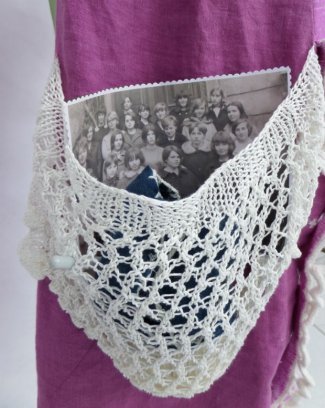
Polyester-based elastic tricot fabric is recyclable
A new clothing concept could change how people affected by dementia interact with and wear their garments, helping to reduce agitation and maintain their independence for longer, according to the Nottingham Trent University. Britta Schulte, a Fashion Knitwear Design and Knitted Textiles student at the University’s School of Art & Design, carried out a research into dementia and how specially designed clothing could make a difference to an individual’s daily routine and general wellbeing.

12th June 2013
Knitting Industry
|
Nottingham
A new clothing concept could change how people affected by dementia interact with and wear their garments, helping to reduce agitation and maintain their independence for longer, according to the Nottingham Trent University.
Britta Schulte, a Fashion Knitwear Design and Knitted Textiles student at the University’s School of Art & Design, carried out a research into dementia and how specially designed clothing could make a difference to an individual’s daily routine and general wellbeing.
Britta has developed a new clothing collection which she believes could tackle some of the challenges encountered when living with dementia making it easier for the wearer to orientate.
The garments provide information to the wearer so they can understand how to put on the clothing, including highlighted and magnetic fastenings. Sensory aspects are also incorporated to help with recollection.
Britta, 32, said: “Dementia reduces the ability to recall memories. It might therefore decrease the ability to recognise objects for what they are and to understand their purpose, even though the object might be familiar. However, people affected by dementia do not lose the ability to perceive their surroundings and are able to become aware of things through their senses.

“This collection tries to achieve two things, firstly creating appealing garments for people with dementia that include audible and olfactory clues. Secondly, making the garments easily perceivable by including visual and tactile signs of how the garment should be worn.”
Britta, whose grandmother had a form of dementia, added: “The next challenges I want to address are creating clothing that will help the person decide when to get dressed and how to choose clothing that will be adequate.”
“Even though we do it every day and we might not be aware of it, dressing is a complex task that requires a lot of decisions to be made throughout. People with dementia might struggle with the decision making and therefore might be discouraged by dressing. To create a system that could reduce this challenge would help the person retain their independence for longer.”

Tessa Gutteridge, director of Young Dementia UK, commented: “Clothing that can be both attractive and easy for a person with dementia to manage independently would be extremely advantageous. It would be a real gain for the person who, after all, experiences so many losses in their life, and encouraging and helpful for the family too.”

Business intelligence for the fibre, textiles and apparel industries: technologies, innovations, markets, investments, trade policy, sourcing, strategy...
Find out more